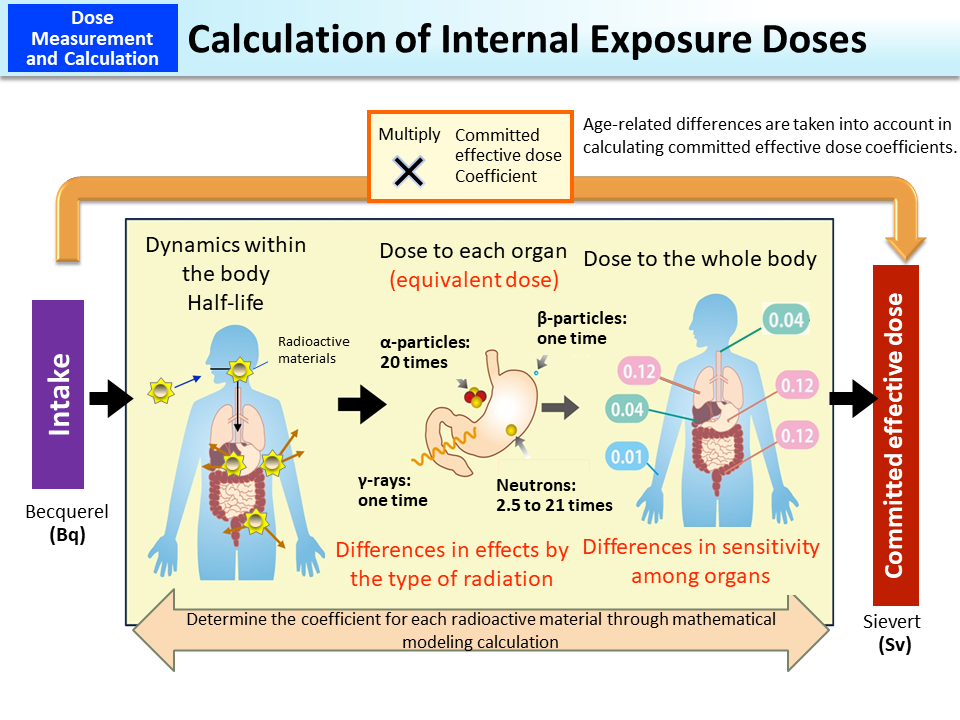Calculation of Internal Exposure Doses
Methods of obtaining effective doses due to internal exposure are essentially the same as for external exposure. However, how to calculate absorbed doses for respective organs and tissues is different.
The part of the body where radioactive materials accumulate varies by their types. Even the same type of radioactive material differs in the behavior within the body, such as metabolism and accumulation, depending on whether they enter the body via the respiratory organs through inhalation or via the digestive tract together with foods and drinks. Moreover, how long radioactive materials will remain in the body varies depending on whether the person is an adult, a child, or an infant.
Mathematical model calculation is performed for each of these different conditions to determine the relationship between the intake of radioactive materials and the absorbed dose of each organ and tissue. Then, differences in sensitivity by types of radiation and among different organs are taken into account in the same manner as for calculation of external exposure doses. An internal exposure dose calculated in this way is called a committed effective dose (in sieverts) (p.56 of Vol. 1, “Committed Effective Doses”).
Specifically, internal exposure doses can be obtained by multiplying intake (in becquerels) by a committed effective dose coefficient. Committed effective dose coefficients are defined in detail for each type of radionuclide and age group (p.57 of Vol. 1, “Conversion Factors to Effective Doses”).
- Included in this reference material on March 31, 2013
- Updated on March 31, 2019

